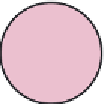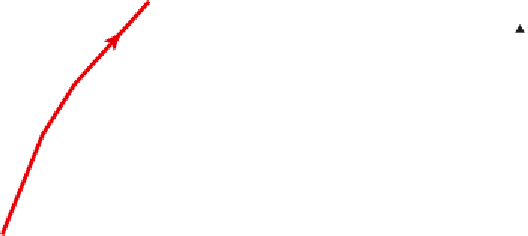Biomedical Engineering Reference
In-Depth Information
The image of the diffraction pattern is focused by a microscope with NA
5
0.95 and
recorded with a charge-coupled device (CCD) attached to the microscope. The CCD is a
square pixel camera with 1600
3
1152 pixels. Image analysis is performed with the Holo-
Moir´ Strain Analyzer software (HoloStrain
t
) developed by Sciammarella and
collaborators
[12]
.
The first step to understanding the process of recording the FTs of the observed objects is
to consider the microsphere as a relay lens (
Figure 17.3
). The focal distance
f
of this lens
can be computed using the equations of geometric optics. The microsphere generates a
diffraction pattern. The source of the illumination generating the diffraction pattern of the
microsphere is the resonant electromagnetic oscillations of interaction between the
microsphere and the supporting microscope slide. The whole region of contact between the
particle and the microscopic slide becomes the equivalent of a microlaser. The light is
generated in the sphere around the first 100 nm in depth and focused in the focal plane of
the sphere. The microscope is focused to the plane of best contrast of the diffraction
pattern, which must be very close to the microsphere focal plane. The diffraction pattern is
not formed by a plane wavefront illuminating the microsphere, as in the case of the
classical Mie's solution for a diffracting sphere. In the present case, a large number of
evanescent wavefronts are generated in a very small region (radius 400 nm) that is in
contact with the microsphere and then generate propagating wavefronts that are seen as
interference fringes.
The formation of the interference fringes has been explained by utilizing an approximate
solution of the diffraction equation
[10,13]
reproducing the observed experimental pattern.
These results were confirmed following a formal approach to the diffraction problem of a
dielectric spherical particle
[14]
.
k
v
y
Energy emitted in this
region is ≈95% of total
u
x
θ
z
+R
sph
f
i
= 11.21
μ
m
-R
sph
k
6
μ
m
Figure 17.3
Polystyrene microsphere modeled as a small spherical lens
[10]
.


































































Search WWH ::

Custom Search